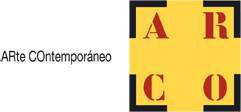The Korean Moon Jar – exhibition at the British Museum, London
The Korean Moon Jar – exhibition at the British Museum, London – october 2007. This display focuses on a large, white porcelain jar considered a masterpiece of Korean art
]]>
This display focuses on a large, white porcelain jar considered a masterpiece of Korean art. Unique to Korea, the moon jars were made in the late to mid 17th to mid-18th century and were used for storing rice, soy sauce, alcohol and sometimes displaying flowers. The pure simplicity of the jar has inspired the work of modern artists including British ceramicists Bernard Leach and Lucie Rie as well as contemporary Korean photographer, Koo Bohnchang and painter Kim Whanki.
The moon jar is one of only 20 remaining in the world. It rises from a small base to a height of over 40cm, with its girth nearly matching its height. Reinforcing the moon-like appearance is the milky white colour with no pattern or decoration. Because of their sheer size, jars of this kind were made by throwing the top and bottom sections separately and joining them at the centre. In many cases these two sections were slightly different in size and thickness, creating an intriguing contour around the jar. Modern day experiments at recreating these kind of voluminous jars testifies to the great level of skill of the Joseon craftsman; many jars would undoubtedly have failed to survive the kiln.
Behind the moon jar’s apparent simplicity lie complex ideas and philosophy that were prevalent throughout over 500 year history of Joseon period (1392 – 1910), the last royal dynasty of Korean antiquity. It embodied the principles of frugality and purity that were the major neo-Confucian ideals of literati and educated aristocracy at the time. The asymmetry of the jar caused by warping on the wheel or slumping in the kiln was viewed not as a deformity rather as nature taking its course. The moon jar was born at the time when Korea was rebuilding the nation from the ruins of two major invasions: the Japanese invasion in 1592 and the Manchu invasion in 1636. It was a period when the country was experiencing a surge in its sense of national identity, economic prosperity and a flowering of culture. Undecorated plain white wares, notably those manufactured in the official kilns in Bunwon, Gwanju near Seoul were seen as expressing a distinctive cultural voice. They were the most in demand and widely manufactured ceramic type with the court itself being a customer.
In the Room 3 display, the moon jar will be supported by several objects that attempt to put it in its proper cultural context. These include an image of a painting by Kim Hong-do (b.1745), depicting the use of white porcelain wares at an elderly gentlemen’s outdoor gathering as well as modern moon jar created by Korea’s foremost contemporary ceramic artist Park Young-sook. The latter is accompanied by a DVD showing the process of making white porcelain jars as it would have been done 300 years ago. The modern provenance of the jar is also explored.
The display will coincide with Chuseok, the Korea’s harvest festival celebrating blessings of life with full moon on 22 September 2007. Marking both occasions, a series of programmes ranging from costumed dancing, performances of percussion band and experimental art and hands-on workshops will be presented in collaboration with the Korean Cultural Centre. There will also be subtitled screenings of Chihwaseon (Drunk on Women and Poetry) by Cannes’s Best Director winning, Lim Kwon-Taek and historical drama series Jewel in the Palace
Follow us on:


